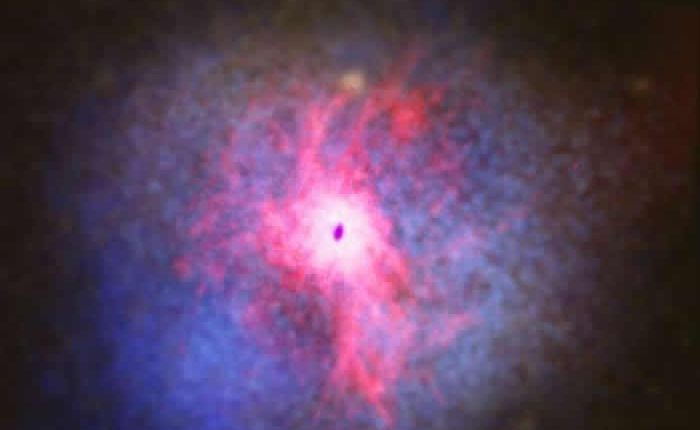First ultra-compact dwarf galaxy found
The astronomers led by Favio Faifer of the National University of La Plata, Argentina have come across the first Ultra-Compact Dwarf (UCD) galaxy in an X-ray bright galaxy group designated NGC 5044.
Located some 116 million light years away, NGC 5044 is an early-type massive elliptical galaxy residing at the center of an X-ray bright group also named NGC 5044. This group contains about 150 members, most of which are dwarf galaxies. Although the group’s center galaxy has been the subject of several past studies, its globular cluster and UCD system remain unexplored.
UCDs are very compact galaxies with high stellar populations, containing about 100 million stars. They display masses, colors, and metallicities between those of globular clusters and early-type dwarf galaxies.
These ultra-compact stellar systems could provide important insights on the formation and evolution of galaxies in the universe.
That is why Faifer’s team observed the NGC 5044 with the Gemini Multi-Object Spectrograph (GMOS) at the Gemini South telescope in Chile. They obtained deep images of several fields around NGC 5044, which allowed them to detect the presence of a UCD.
The researchers wrote: “From the photometric and spectroscopic analysis of a deep field taken with Gemini+GMOS, we have been able to detect and confirm the first UCD in the NGC 5044 group.”
The radial velocity and angular proximity (2.83arcmin) of this UCD indicate that this object is associated with galaxy NGC 5044. The newly discovered UCD was designated NGC 5044-UCD1.
The researchers found that the metallicity of NGC 5044-UCD1 is within the range displayed by other UCD detected in constellations Virgo and Fornax, but considerably lower than that of the confirmed stripped nuclei described in previous studies. They also studied the star formation history of this UCD and found that this object is approximately 11.7 billion years old.
Although the origin of UCDs is still widely debated, the most plausible hypotheses suggest that they are massive star clusters or the nuclei of tidally stripped dwarf galaxies.
The scientists assume that NGC 5044-UCD1 could be such an unusually massive globular cluster. They note that the object’s luminosity is well above the usual upper cut for ‘classical’ globular clusters. Furthermore, NGC 5044-UCD1 presents a supersolar α-element abundance of [α/Fe] = 0.30, suggesting rapid star formation, typical for most globular clusters.
“All the lines of evidence would point toward NGC 5044-UCD1 being an unusually massive globular cluster of the NGC 5044 system,” the paper read.
Further spectroscopic observations could reveal more insights on the true nature of NGC 5044-UCD1. Currently, the team prepares an analysis of the complete photometric dataset, what will be presented in a forthcoming paper.
More information: Phys.org


